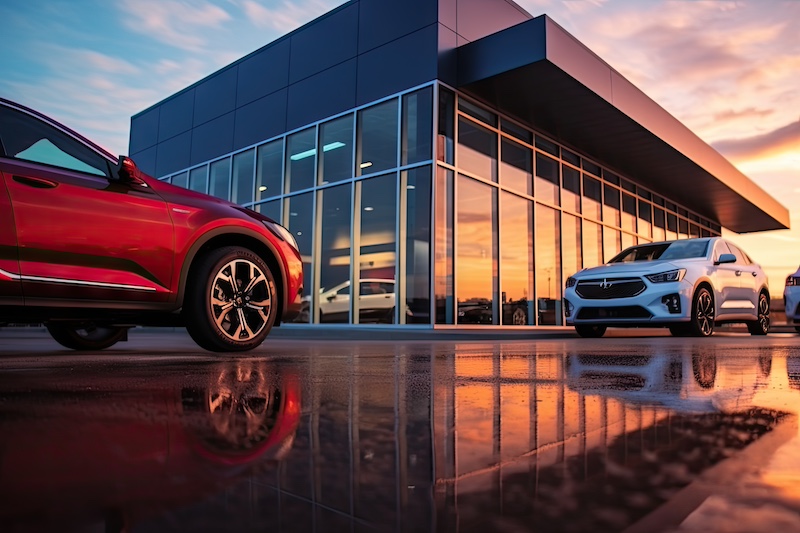Americans are buying more trucks, SUVs, and crossovers than cars. This is not breaking news, but rather a phenomenon that has been trending for several years.
Reasons vary depending on who you ask, but on a personal level, I’ve only owned two cars in the past 45 years. I was a Ford Bronco fan right from the start and have had an SUV in my garage ever since.
Last year, truck sales captured 69% of the market (up five percentage points from 2017). In fact, it was the biggest single-year share gain ever, according to Automotive News Data Center statistics.
Crossovers alone outsold cars for the first time in history in 2018 with 1.3 million more crossovers than cars.
From the way I’m reading the tea leaves, this truck takeover will continue for the foreseeable future.
So, what is the impact on fixed ops? First of all, let’s look at the low-hanging fruit:
POWER TRAIN
Front and rear differential and transfer case fluid exchange services are often overlooked by vehicle owners—especially if they are transitioning from a sedan to a pickup or SUV. Many of these consumers are coming out of a front-wheel drive car that didn’t have gear lube that needed to be changed, so believe me when I say any type of preventive maintenance on these vital components is totally off their radar.
How many times have you had a vehicle owner step up to the service advisor’s desk and say, “I’m here for a transfer case service?” Never. Therefore, the only way this vital fluid service is ever going to be performed in your shop is for your advisors to recommend it!
One way you can build value into these services is to emphasize to the customers the importance of using the right gear lubes uniquely equipped for their truck. Make a big deal out of the fact that you have new technology fluids for new technology driveline components. If a competitor installs GL-5 gear lube in a transfer case, there’s going to be trouble. An 80w90 gear lube won’t work in a 75w140 application. If an untrained, unskilled technician leaves the limited-slip additive out of most rear differentials, there will be lots of wear and noise.
Then there’s the huge difference between non-synthetics, synthetic blends, and full synthetic. When you quote the price, if vehicle owners say, “Wow, I can get it for $80 less right down the street,” remind them about the importance of fluid quality, application (the right fluid for the right component), and technician skill level to do the job correctly. The harsh environment in which driveline components operate—high pressure, high torque, high speed—demand cutting-edge lubes and professional installation that only you can provide!
POWER STEERING
While many late-model passenger cars have electronic power steering, many pickups and SUVs don’t. Hydraulic power steering or hydraulic-electric power steering can still be found in these new vehicles. Additionally, there are more than 150 million older vehicles on the road with traditional hydraulic power steering systems.
Power steering fluid is no different than any other hydrocarbon; high heat (caused by high pressure) causes fluid oxidation, which leads to fluid deterioration and ultimately component failure.
It’s cheaper to replace the power steering fluid than the power steering pump and rack. Most of these fluids are similar (identical) to transmission fluid, and, like gear lubes, range from mineral oil-based to full synthetics.
It is critical to use the right fluid in the right application and to do a thorough fluid exchange service using the right equipment. Goober Lube can’t do that; you can.
Most power steering systems are covered under OEM warranties for 36 months or 36,000 miles. Therefore, if there is a catastrophic failure at 50,000 miles, the customer is exposed. By changing the power steering fluid every 30,000 miles, the odds of costly failure are significantly reduced.
SEVERE SERVICE
Arguably, there are very few places in the U.S. that would be classified as “normal” driving conditions. Weather extremes, driving habits, road construction, and heavy traffic cause most vehicles to be driven under “severe” driving conditions. Never is that truer than with trucks and SUVs— especially four-wheel drive vehicles. Oh, sure, there are some armchair cowboys whose pickups have never seen a speck of mud, but even these guys drive in extreme hot and cold, stop-and-go traffic, and harsh road conditions.
There are some ridiculously long drain intervals on fluids like transmission fluid and antifreeze, but “severe service” intervals are much lower. Temperature extremes wreak havoc on vital fluids, and they have to be changed more frequently. What a great opportunity!
Contractors, farmers, ranchers, and extreme sports enthusiasts (just to name a few) need their trucks in top shape to get the job done. It’s the service advisor’s job to make sure these customers have a well-maintained vehicle. For the contractor, the money stops, and for the sports enthusiast, the fun stops whenever their truck stops working. Don’t let that happen on your watch. Like Paul Revere, I’m simply reminding you “the trucks are coming! The trucks are coming!” Make sure your advisors are ready to seize the opportunity, present the vehicle’s maintenance needs, and ask for the service sale.
Forecasters are saying 500,000-750,000 fewer vehicles will be sold in 2019. How will you make up the revenue loss? By selling preventive maintenance services!
Remember the 300% rule: present 100% of the technician-recommended services to 100% of the customers 100% of the time.








